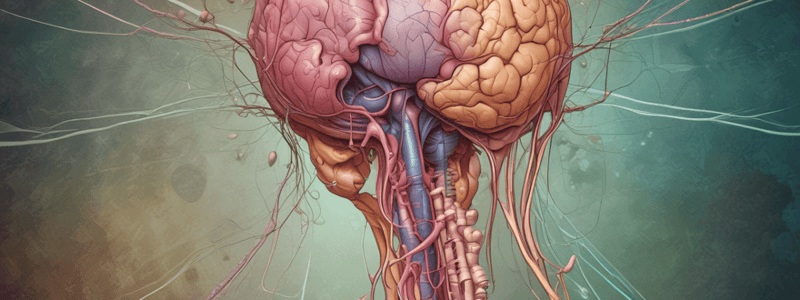Podcast
Questions and Answers
What is the primary cell type involved in pheochromocytoma?
What is the primary cell type involved in pheochromocytoma?
- Chromaffin cells (correct)
- Cortical neurons
- Adrenal cortex cells
- Pituitary cells
What is the condition called when the tumor develops outside the adrenal medulla?
What is the condition called when the tumor develops outside the adrenal medulla?
- Adenoma
- Neuroblastoma
- Carcinoid
- Paraganglioma (correct)
Which of the following is NOT a common symptom of pheochromocytoma?
Which of the following is NOT a common symptom of pheochromocytoma?
- Tachycardia
- Hyperhidrosis
- Hypertension
- Hypotension (correct)
Which laboratory test is NOT typically used to diagnose pheochromocytoma?
Which laboratory test is NOT typically used to diagnose pheochromocytoma?
What is the primary biochemical characteristic of pheochromocytoma?
What is the primary biochemical characteristic of pheochromocytoma?
Flashcards are hidden until you start studying
Study Notes
Pheochromocytoma
- Rare tumor of chromaffin cells (pheochromocytes) located in adrenal medulla.
- Tumor developed in chromaffin cells outside adrenal medulla is called paraganglioma.
Symptoms
- Hypertension
- Tachycardia
- Hyperhidrosis (excessive sweating)
Laboratory Diagnosis
- Measurement of catecholamines level in the blood
- Measurement of metanephrine and normetanephrine levels in the blood
- Measurement of Vanillyl Mandelic Acid (VMA) and Homovanillic Acid levels in the urine
Studying That Suits You
Use AI to generate personalized quizzes and flashcards to suit your learning preferences.




